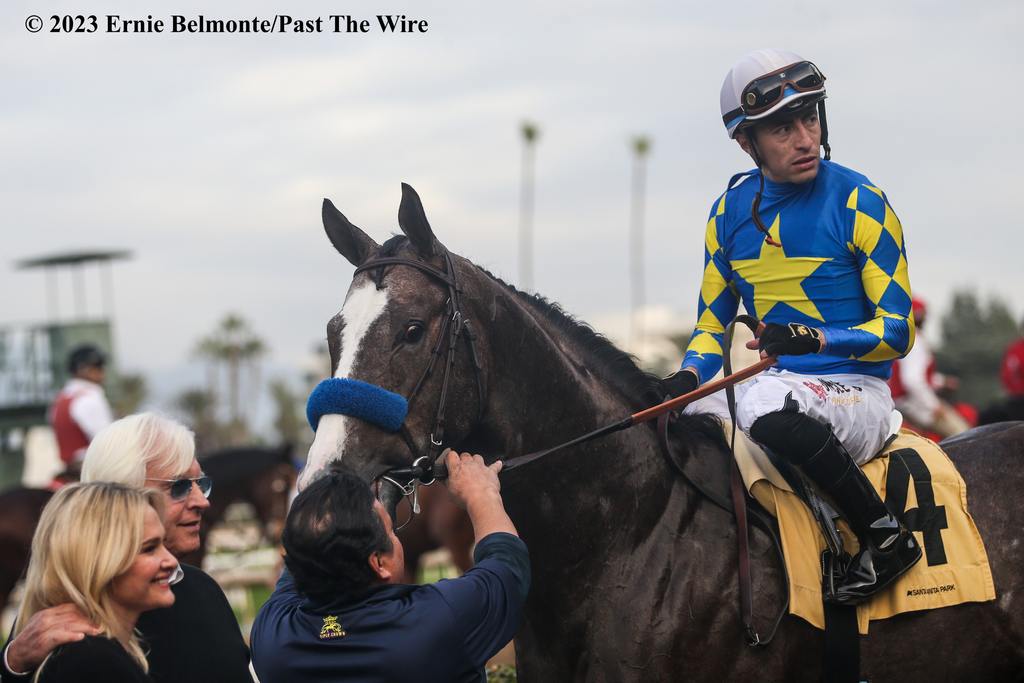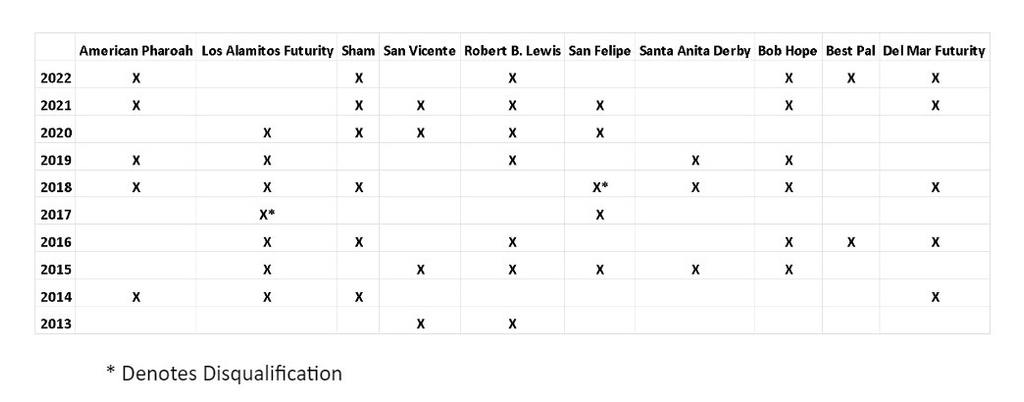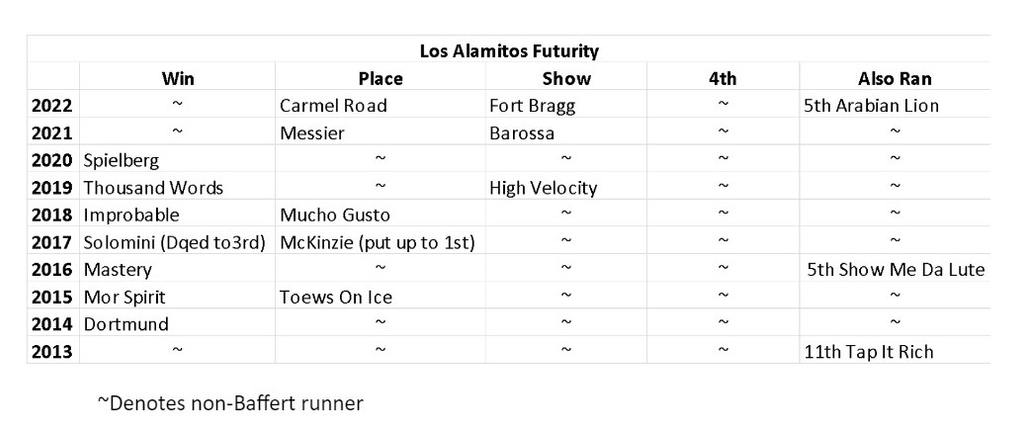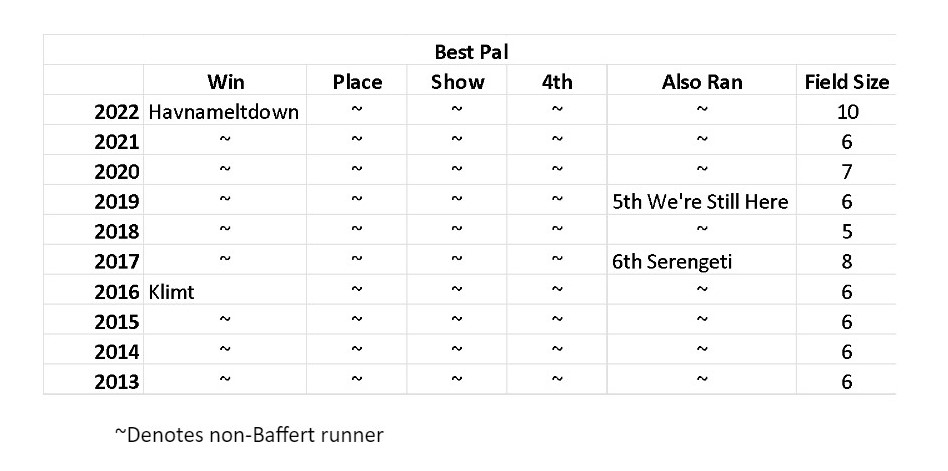
Bob Baffert and his wife Jill with Reincarnate after his win in the G3 Sham (Ernie Belmonte/Past The Wire)
By Ashley Tamulonis
When it comes to graded stakes for 2 and-3-year-olds, Bob Baffert holds the monopoly on California. Love him or hate him, he is a successful trainer whom many of the top owners turn to again and again. In fact, despite the ongoing controversy surrounding Medina Spirit’s 2021 Kentucky Derby (G1) victory, Baffert has become so successful that in most races in which he has entrants are foregone conclusions. Even that pesky ban from Churchill Downs, Inc. has been unable to slow down the freight train that is Baffert. His colts remain some of the top prospects for the 2023 Kentucky Derby, though they will have to be transferred to another trainer by the end of the month in order to become eligible to compete in the Run for the Roses.
In total, California offers five points races on the Road to the Kentucky Derby, all hosted by Santa Anita. There are five additional races that do not carry any points but remain major targets as preps for other big events such as the Breeders’ Cup.
While the above table only covers the last ten years, Bob Baffert has won more than just the listed editions. In total, he has won the American Pharoah 11 times, the Los Alamitos Futurity 13 times, the Bob Hope 12 times, the Best Pal 9 times, the Del Mar Futurity 16 times, the Sham 9 times, the San Vicente 12 times, the Robert B. Lewis 10 times, the San Felipe 8 times, and the Santa Anita Derby 9 times.
Those ten races all lead up to the Grade 1 Kentucky Derby. While the Bob Hope, Best Pal, Del Mar Futurity, and San Vicente are not designated points races, they do often feature runners that crop up in the later and longer, bigger points races. Often Baffert is not just winning the big California races, but also has multiple entrants. When he has multiple entrants, it is characteristic to see his horses sweep the minor placings as well as notch the victory. Very rarely do Baffert’s trainees finish worse than 5th. The Los Alamitos Futurity is an excellent example of this.
It is also atypical for Baffert to not have any runners in these races. Occasionally they will attract a larger field if Baffert is absent, but that’s not always the case. Likewise, large fields will occasionally take on the Baffert contingent. Look at the Best Pal. Though Baffert has won that race nine times, it has not been a major target over the last decade. During that period, he won the race twice and only had runners in two other years. Unfortunately, the field size for the Best Pal was not positively impacted despite Baffert’s absence.
With each passing year, Baffert’s star continues to rise. But while he is undoubtedly happy, for the most part, with the way the cards are falling, his success comes with consequences. Left in his wake are other trainers desperately looking for talent and a betting public that ponders how to deal with the scenario.
Things have gotten to the point that Baffert even dominates the nominations lists. A case in point is this year’s running of the Robert B. Lewis. Of the 16 nominations, 14 of them were Baffert trainees with 7 of those 14 hailing from the same ownership group. When it came time to draw the race, only four were entered, all Baffert horses. This led to an interesting scenario in which no points were doled out due to every runner being ineligible to earn points because of Churchill Downs, Inc.’s ban on Baffert.
Baffert also domineered the Sham and the San Vicente last month. He entered four of the six runners in the Sham but ultimately only sent out three after scratching Speed Boat Beach. It was an all Baffert trifecta. While the top three were ineligible to receive points, Packs a Wahlop (2) and Spun Intended (1) earned Derby points for their fourth and fifth-place finishes, respectively. Baffert likewise had four of the five entrants in the San Vicente, which is not a points race, but only saddled three after scratching Gilmore. Once again, the Baffert contingent swept the top three placings.
One would think that other trainers would nominate and run their horses against Bob Baffert in these big races to at least get a slice of the pie. But that’s where the other problem lies. While graded stakes purses have remained largely stagnant, the purses for allowance-type races have increased. When a graded stake is only offering a purse of $200,000 and you’re sure that you’re running for a minor placing only, why waste your time? Economically it makes more sense to forego the nomination fee and take home the winner’s share of the allowance purse. There is also the declining foal crop to contend with. You can’t train what isn’t there, so with the talent pool shrinking, there are fewer stars to go around.
Thus West Coast racing has a problem to which I see no good solution. Some have called for a cap on the number of horses a trainer can take on, but that just is not feasible. Such a rule would punish the most successful trainers, taking horses from their barns and money from their pockets. It could also revoke a lot of the owners’ right to choose who trains their horses. Sure, it would help give smaller barns a leg up, but it is guaranteed that owners would get up in arms if they could not send their horses to their choice of trainer.
It’s not solely a West Coast issue either. On the East Coast, particularly in New York, turf races are dominated by Chad Brown runners. He, too, is sent the cream of the crop, often has multiple entrants, and sweeps the board in races in which he has more than one entrant. While there are certainly plenty of trainers to choose from in the East, if you’re looking to win the biggest turf races in America, Chad Brown is the go-to guy.
With inflation rising, foal crops shrinking, and no way to make everyone happy, there’s only one thing to do. Sit back, relax, and let the Baffert Express roll. The end of the line may not be visible just yet, so we might as well just enjoy the show.






